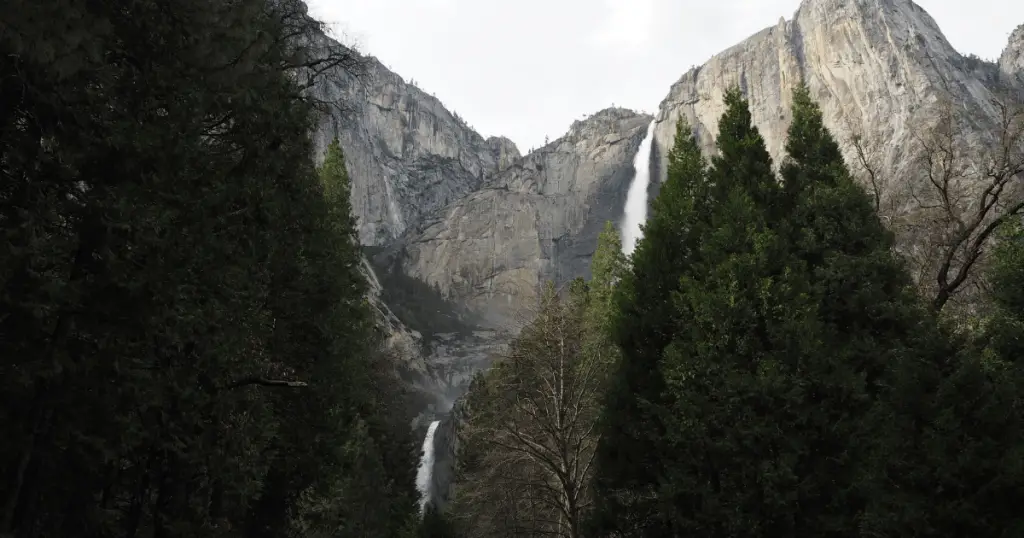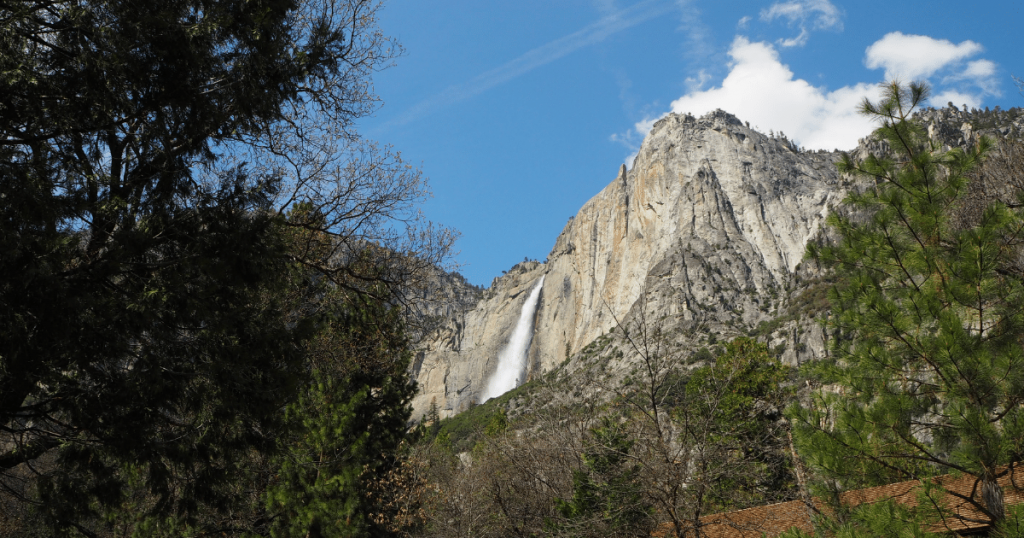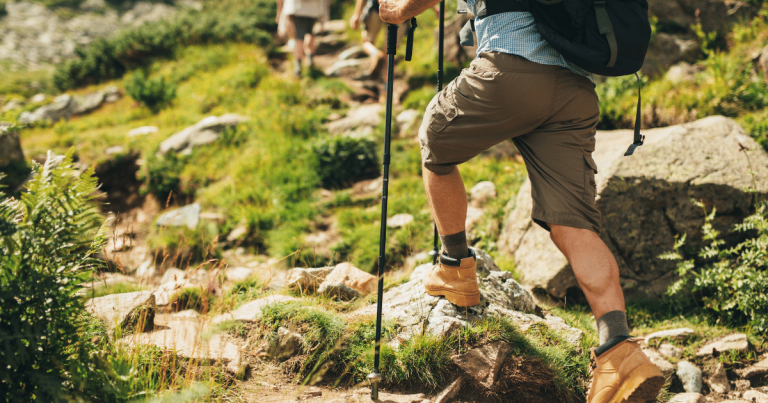Discover the Beauty of Sequoia National Park Waterfalls – A Complete Guide
Sequoia National Park is a must-visit destination if you’re searching for a place with abundant natural beauty. The park boasts a wide range of landscapes and ecosystems, including magnificent mountains, towering sequoia trees, and breathtaking waterfalls.

With over 200 waterfalls within the park, you’ll find plenty to explore and discover during your visit. In this article, we’ll take you through some of the most beautiful Sequoia National Park waterfalls that are definitely worth a visit.
The Geography of Sequoia National Park
Sequoia National Park, located in California’s southern Sierra Nevada mountains, is a sprawling natural wonder covering over 404,000 acres. The park’s topography is characterized by a diverse range of features, from rugged mountain landscapes deep canyons, to vast caverns.
The presence of steep gradients and abrupt elevation changes contribute significantly to the formation of the park’s spectacular waterfalls. The park’s climate is Mediterranean, with warm, dry summers and mild, wet winters.
Precipitation patterns largely depend on the elevation, with the lower areas receiving about 26 inches of rain annually. In comparison, the higher elevations can receive up to 50 inches, including significant snowfall in the winter months.
This variation in precipitation across different parts of the park plays a crucial role in feeding its many streams and rivers, eventually forming the awe-inspiring waterfalls that the park is renowned for.
Notable Waterfalls in Sequoia National Park
Sequoia National Park is home to several breathtaking waterfalls that are worth exploring. Let us highlight a few of the most impressive ones for you.
General Sherman Tree Falls
The General Sherman Tree Falls is situated near the heart of Sequoia National Park, near the world-famous General Sherman Tree. The waterfall is reachable via a moderately challenging hiking trail that offers breathtaking views of the surrounding landscapes. It is accessible year-round, although some trail sections can be snow-covered or slippery during the winter months.
The waterfall is a spectacular sight, dropping from approximately 150 feet. The flow rate varies greatly depending on the season, with the highest flow observed during spring and early summer when the snowmelt from the higher elevations rushes into the valley.
One of the most striking features of General Sherman Tree Falls is its proximity to the world’s largest tree, the General Sherman Tree. This juxtaposition of the towering tree and the cascading waterfall creates an awe-inspiring spectacle.
Furthermore, the falls are surrounded by a dense grove of ancient sequoia trees, adding a sense of ageless grandeur to the scene. The roar of the falls echoing through the towering forest is a sound that stays with visitors long after their visit.

Tokopah Falls
Tokopah Falls is another fantastic waterfall located in Sequoia National Park. You can find it at the end of a 1.7-mile trail near the Lodgepole Campground. The trail, largely level and well-maintained, meanders alongside the Marble Fork of the Kaweah River and offers splendid views of the surrounding landscapes.
The flow of Tokopah Falls varies significantly with the seasons. It’s at its most impressive in late spring and early summer when melting snow from higher elevations fills the river. As the summer progresses, the flow lessens, and by late summer or early fall, the falls may be reduced to a trickle or even completely dry.
Despite these variations, the falls remain a popular attraction due to the surrounding beauty of the high Sierra Nevada Mountains. The trail to Tokopah Falls is relatively easy and suitable for most fitness levels, making it a popular hike for families and casual hikers.
The path winds through picturesque forests and meadows, and hikers can often spot local wildlife, such as marmots and black bears, especially in the early morning or late afternoon.
The trail ends at a viewing area where visitors can marvel at the 1,200-foot waterfall cascading down massive granite cliffs into a serene pool below. The sheer size and power of the falls, framed by towering peaks, make for a memorable spectacle sure to impress.
Roaring River Falls
Roaring River Falls is located at the end of a short, wheelchair-accessible trail that starts from the Roaring River Falls parking lot. The trail is approximately 0.3 miles long, and the walk to the falls is easy and manageable for visitors of all ages.
The observation point offers a close-up view of the falls, making it a thrilling experience for visitors. However, caution must be taken near the falls due to the forceful water flow, especially during spring.
The falls result from the Roaring River cascading over a ledge of resistant metamorphic rock. Over time, the force of the water has eroded the softer rock beneath the ledge, creating a deep plunge pool at the base of the falls.
The water cascades down in a powerful, unbroken sheet, which leads to an impressive display of splashing white water, giving the falls its name.The area surrounding Roaring River Falls is rich in biodiversity. The moist environment near the falls supports a variety of plant life, including ferns, mosses, and a wide array of wildflowers.

The shady forests around the falls are home to various species of birds, including Steller’s jays and American dippers. Mammals such as mule deer, black bears, and squirrels are also common in the vicinity. Visitors are encouraged to keep safe from wildlife and refrain from feeding them, as it may disrupt their natural behaviors.
Mist Falls
Mist Falls is an awe-inspiring waterfall in the heart of Kings Canyon in Sequoia National Park. It presents a stunning spectacle as the water plunges over granite cliffs, releasing a mist-like spray that gives the falls its name.
The waterfall is located on the South Fork of the Kings River and is one of the largest river waterfalls in the Sierra Nevada. The thunderous roar of the falls and the resultant misty aura create a surreal environment that draws thousands of visitors annually.
At approximately 100 feet high, Mist Falls is not the tallest waterfall in the park, but it is one of the most powerful. The spectacle it creates as the Kings River cascades over a large granite slope is unique in the park.
The mist generated by the falls nourishes a microhabitat of moss and ferns, adding to the region’s biodiversity. The falls also serve as a critical water source for many species, making it a hotspot for wildlife sightings.
The Mist Falls trail is a popular hiking route in the park. The round trip to the falls and back is approximately 9 miles and offers hikers a moderate challenge. The trailhead begins at Roads End in Kings Canyon and follows the South Fork of the Kings River, gradually ascending through forests and meadows before reaching the falls.
The trail is well-marked and offers many scenic viewpoints, each providing a unique perspective of the Kings River and the surrounding mountainous terrain. Like many other features in Sequoia National Park, Mist Falls owes its existence to the geological processes that have shaped the Sierra Nevada over millions of years.

Best Times to Visit the Waterfalls
The best time to visit the waterfalls in Sequoia National Park largely depends on the seasonal variations in flow and accessibility. Spring and early summer are generally the most opportune times to witness the waterfalls at their most impressive.
During these seasons, the melting snow from higher elevations greatly increases the water flow, creating a spectacular display at falls like Tokopah and Mist Falls. However, as summer progresses and the snowmelt decreases, the flow at these falls diminishes. By late summer or early fall, some falls may be reduced to a trickle or completely dry.
Regardless of the flow, the beauty of the surrounding Sierra Nevada Mountains makes any visit worthwhile. In addition, the accessibility to most falls remains good throughout the year, although winter snowfall can make some trails challenging. It’s always a good idea to check park conditions before your visit.
Conclusion: Sequoia National Park
The waterfalls in Sequoia National Park, such as the Roaring River Falls and Mist Falls, exemplify the majestic beauty and rich biodiversity within this protected landscape. Each waterfall, while unique in its way, contributes to creating a park experience that is both memorable and awe-inspiring. The seasonal flow of the falls, the surrounding flora and fauna, and the variety of hiking trails all come together to create a visitor experience rich in natural beauty and opportunities for exploration.







